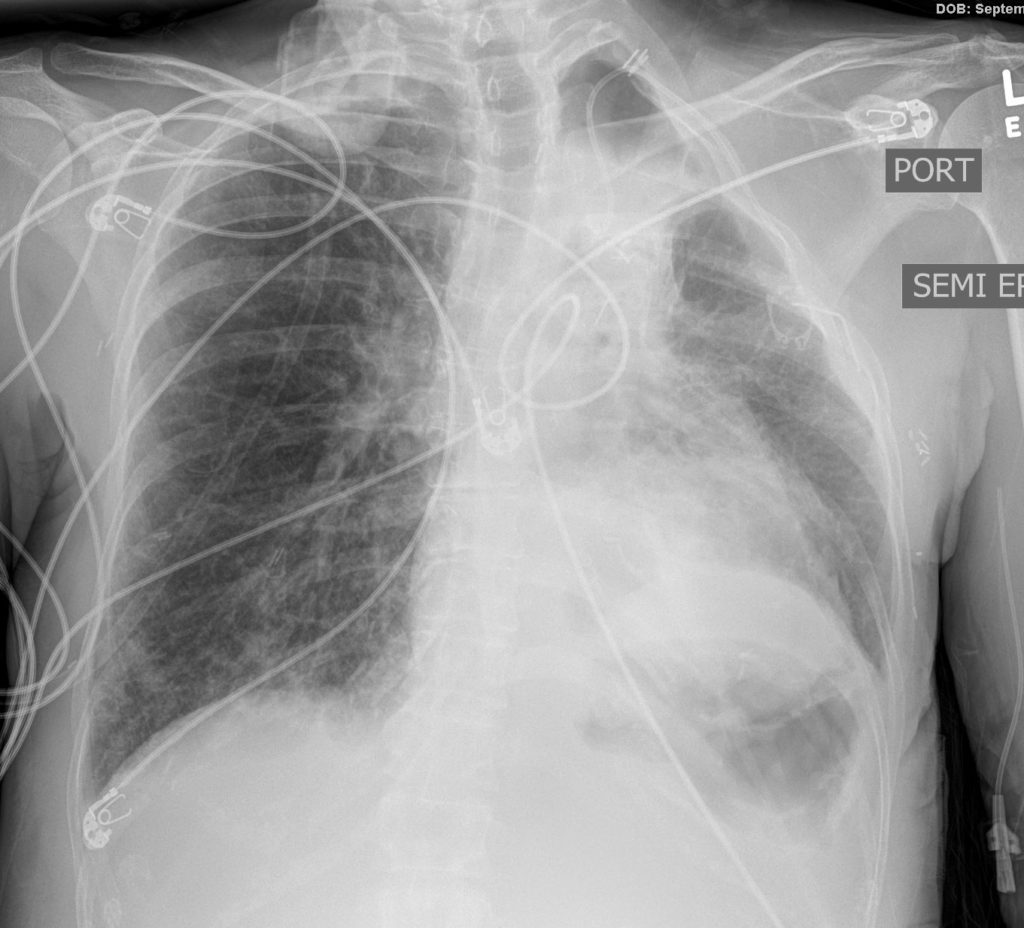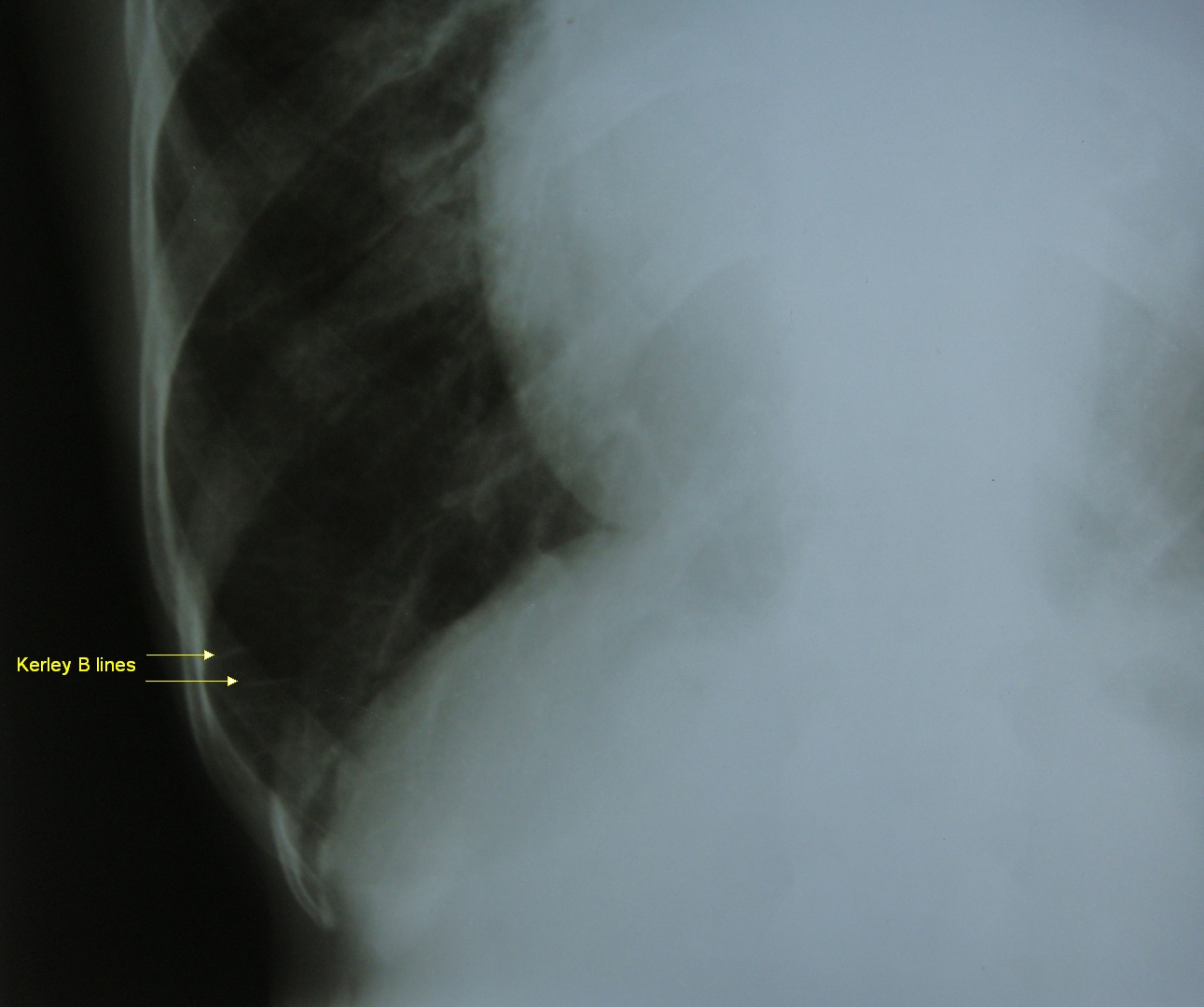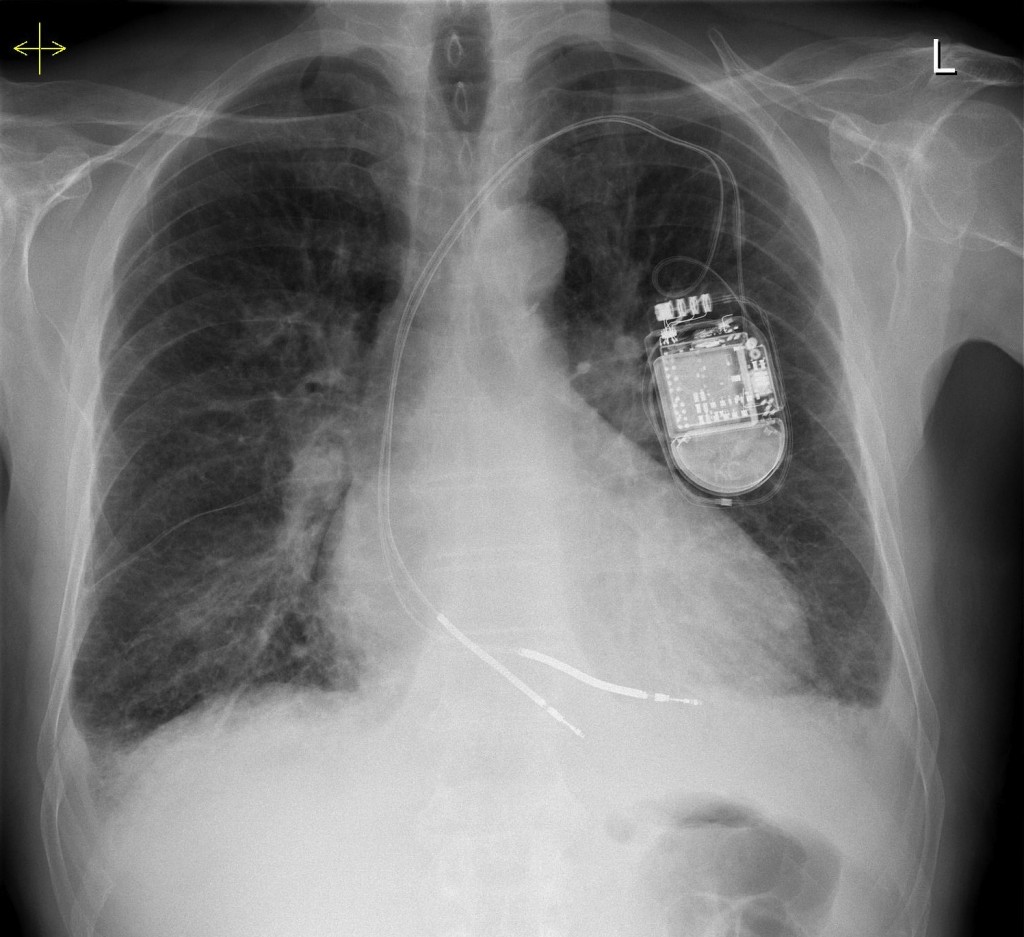
KerleyLinien DocCheck Flexikon
Kerley's A, B, and C Lines. Takeharu Koga, M.D., Ph.D., and Kiminori Fujimoto, M.D., Ph.D. A 59-year-old woman with hypertension and diabetic nephropathy presented with a sudden onset of dyspnea.

Kerley B (septal) lines Image
What are Kerley B Lines? We created this video to cover the medical definition and provide a brief overview of this topic.💥Kerley B lines [Full Guide].

4.13 Kerley B Lines caused by fluid in (usually) or thickening of the interlobular septa
Hey guys! Dr Sharma DO here!Quick lesson on Kerley B Lines, and just overall how to interpret a chest xray that is suggestive of heart failure. Like and Subs.

Kerley Lines Heart
Heart Failure Kerley B lines. In these images. a nd c are normal and b and d represent thickened interlobular septa in a patient with congestive heart failure. These are the well known Kerley lines, often spoken about but rarely seen. They are identified as thin horizontal lines usually seen in the costophrenic angles, not being longer than.

Kerley B lines on CT Image
The characteristic appearance of Kerley B lines is due to the fluid-filled interlobular septa, the connective tissue structures that separate the lung's lobules. Causes of Kerley B Lines. Interstitial pulmonary edema is the primary cause of Kerley B lines. This condition occurs when fluid accumulates within the interstitial space of the lungs.

kerley b lines Google Search in 2021 Medical school stuff, Medical, Radiologist
Chest x-ray 10 days earlier. x-ray. Single lead permanent pacemaker (PPM) in situ. Heart is enlarged, and there is some prominence of the pulmonary vasculature, without evidence of interstitial or alveolar edema.

Image Kerley B Lines Merck Manuals Professional Edition
Kerley B Lines Kerley B lines (arrows) are horizontal lines in the lung periphery that extend to the pleural surface. They denote thickened, edematous interlobular septa often due to pulmonary edema.

PPT Diagnostic Radiology Congestive Heart Failure PowerPoint Presentation ID6637651
Kerley B lines are short parallel lines at the lung periphery. These lines represent distended interlobular septa, which are usually less than 1 cm in length and parallel to one another at right angles to the pleura. They are located peripherally in contact with the pleura, but are generally absent along fissural surfaces. They may be seen in.
Chest xray showing interstitial lung edema with Kerley B Lines... Download Scientific Diagram
Small horizontal white lines seen at the outer edges of the lungs. These can be seen on a chest x-ray in a patient with pulmonary edema.

The Radiology Assistant Chest XRay Heart Failure
Kerley B Lines. These are horizontal lines less than 2cm long, commonly found in the lower zone periphery. These lines are the thickened, edematous interlobular septa. Causes of Kerley B lines include; pulmonary edema, lymphangitis carcinomatosa and malignant lymphoma, viral and mycoplasmal pneumonia, interstital pulmonary fibrosis.

Pulmonary edema chest x ray wikidoc
Kerley B lines are small, horizontal, peripheral straight lines demonstrated at the lung bases that represent thickened interlobular septa on CXR. They represent edema of the interlobular septa and though not specific, they frequently imply left ventricular failure. Kerley C lines are reticular opacities at the lung base, representing Kerley.

Post Gad Pulmonary Edema & Kerley B lines
Kerley B lines are linear opacities seen on the chest radiograph. They are 1-2 cm long horizontal lines which meet the pleura at right angles. They are typically seen as a ladder up the side of the lungs beginning at the costophrenic angle. Kerley B lines represent interlobular lymphatics which have been distended by fluid or tissue.

Radiology case Chronic lung congestion, Kerley B lines, pleural effusion, aortomitral valvular
Kerley B lines in a patient with congestive heart failure. Kerley B lines. These are short parallel lines at the lung periphery. These lines represent interlobular septa, which are usually less than 1 cm in length and parallel to one another at right angles to the pleura. They are located peripherally in contact with the pleura, but are.

Kerley B lines Chest Xray « PG Blazer
Kerley B-lines: These occur in the area of the pulmonary periphery of the middle lobe, the lingula and the lower lobe. In most cases they are found in the costophrenic angle. They are thin and horizontal lines of about 1 - 2 cm length. They appear as soon as the mean pressure in the left atrium exceeds 20 mmHg at rest [Kasper 2015].
Kerley B Lines Cxr Septal lines in lung Radiology Reference Article They are thin
Plain radiograph. There are bilateral basal interstitial lines that extend to the pleural surface - these are septal (Kerley B) lines. There is slight asymmetry of the breast shadows and metallic clips in the right axilla. Features are consistent with previous breast carcinoma and lymphangitis carcinomatosis. I would compare this with previous.

Kerley B Lines Cxr Septal lines in lung Radiology Reference Article They are thin
Kerley B lines (thickened interlobular septa) are much spoken about as a medical student, but less commonly observed than one might expect given the volume of cardiac failure patients. These thin lines of 1-2 cm are virtually always at the lungs bases and at the lung periphery lying perpendicular to the pleural surface to which they contact.